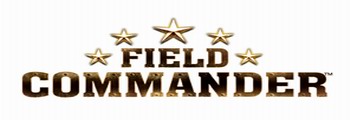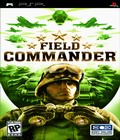Genre: Strategy
Publisher: Sony Online Entertainment
Developer: Sony Online Entertainment
Release Date: March 31, 2006
In many ways, the game that kicked off the Nintendo DS' assault on the US scene was Advance Wars DS. So, it should come as no surprise that Sony Online Entertainment is readying an Advance Wars clone of their very own for their game-starved portable. It should also come as no surprise that Field Commander goes so far above and beyond the features contained in the Advance Wars games that it hardly seems fair to call it a clone at all. As always, SOE has strived to bring all the complexity and immersion of the console experience into portable form with Field Commander, and the early version we got to play around with is showing signs of great promise.
Field Commander is ostensibly about the role you play, as commander, in the course of a great civil war between two nations. As you improve your standing and win battles you'll be allowed to command more elite troops, unlocking new types of units and more imposing commanders as you go. The plot isn't emphasized much beyond setting up the action of each battle, though. Field Commander spends far more time on the missions themselves, which ask you to win battles by either wiping out all of an enemy's troops or capturing their HQ. You lose a battle if you lose all of your troops or lose your HQ. From this simple premise you can find yourself fighting battles that require chess-like precision and extremely careful resource management.
The units you use come in three varieties: land, sea, and air. Generally speaking air units are always more powerful and expensive than land units, while sea units are extremely useful on certain maps and ignorable on others. There are a few units like anti-aircraft guns that are exceptions to this general rule, but for the most part it holds. You manufacture units from Factories, which are located at certain preset locations on each map. Each unit has a given cost, which you draw from a pool of income generated by the cities you control. Only units that represent human soldiers, like Grunts or Spec Ops, can capture rival or neutral cities. A key to victory in every mission is making sure you manufacture the right balance of unit types for the mission, and have enough resources to replace defeated units quickly.
Aside from the terrain types, unit types in Field Commander come with a variety of functions in mind.
Some vehicles are designed for offense, such as the Gunship and Half-Track, while other vehicles like the Truck and Transport Ship are designed mostly for carrying troops and have little in the way of offense or defense. The anti-aircraft gun is designed to let an army shoot down air units from above, and can also be used to great effect as a sort of improvised tank against ground-based units. The most powerful of the sea units we got to play with was the Submarine, which could submerge to travel through deep water and easily demolish enemy ships. Grunts were the weakest and most easily demolished units, but the ones that came most in handy for capturing enemy cities, while Spec Ops had long range attacks that made them excellent defenders.
In this early build of Field Commander, only the Tutorial levels and first mission of campaign mode were really playable, but the final outline of the game was firmly sketched out. Quick Battle mode offered fifty-six different default maps, which can be modified by the player to create original missions. These missions can then be swapped with other Field Commander players. Wireless also supports versus multiplayer battles in both ad hoc and infrastructure modes, and online rankings to encourage competitive play in a Field Commander community. Finally, players will be able to download addition missions and other content after the game is released. On top of all the online content, Field Commander plays host to a wide array of unlockable content. Aside from new unit types, commanders, and divisions, you can also unlock cut-scenes to watch whenever you wish.
Graphically Field Commander does use full 3D graphics, but seems to be going for a functional look over any serious attempt to resemble a PS2 game. Normally you view the action from a top-down perspective, using the D-Pad or analog nub to explore the confines of your map. When units attack each other, you go seamlessly from a top-down view to a ground-level view, where you'll see animations of the two units exchanging attacks and a numerical tally for the damage. The ground-level view accurately reflects any details of the location during the exchange of fire, such as trees, buildings, or surrounding units in the background. The units aren't enormously detailed but quite convincing, especially for a portable title. You see sparks and bullets fly from units that don't take much damage, and sprays of blood from human soldiers that are under fire.
Attention to detail like this helps keep the missions enjoyable despite how long they can be. Slightly more disappointing is the art for the commanders, which right now is just a single static painted portrait. So characters always have the same expression on their face, no matter what sort of emotion they're supposed to be experiencing.
It's hard to judge the use of sound in Field Commander right now, since not much has been implemented besides the sound effects. The Tutorials offer a taste of what the final game will be like, though: full voice acting for every character and every significant bit of text. While only three characters are voiced in the current build, the acting itself was of a high enough quality that it made the limitations of the static face portraits extremely noticeable. There's very little music in the current build, and what's there is more inoffensive than truly interesting. Still, there's no telling what SOE will be putting in the final product.
All told, Field Commander seems to be adding another solid strategy game to the struggling PSP library, and definitely gives the PSP a viable answer to Advance Wars. Whether the game manages to transcend the comparisons to Advance Wars and stand on its own as a quality turn-based war strategy title with a thriving online community behind it remains to be seen. Fortunately, what we've seen of Field Commander looks like it has the potential to go the distance.
More articles about Field Commander











 Field Commander is the first military turn-based strategy game for PSP and the only title that offers engaging, challenging skill based warfare in a realistic military setting.
Field Commander is the first military turn-based strategy game for PSP and the only title that offers engaging, challenging skill based warfare in a realistic military setting.




























